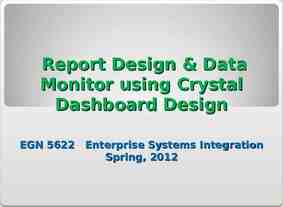The Linux Kernel: Introduction CS591 (Spring 2001)
49 Slides611.50 KB
The Linux Kernel: Introduction CS591 (Spring 2001)
History UNIX: 1969 Thompson & Ritchie AT&T Bell Labs. BSD: 1978 Berkeley Software Distribution. Commercial Vendors: Sun, HP, IBM, SGI, DEC. GNU: 1984 Richard Stallman, FSF. POSIX: 1986 IEEE Portable Operating System unIX. Minix: 1987 Andy Tannenbaum. SVR4: 1989 AT&T and Sun. Linux: 1991 Linus Torvalds Intel 386 (i386). Open Source: GPL. CS591 (Spring 2001)
Linux Features UNIX-like operating system. Features: Preemptive multitasking. Virtual memory (protected memory, paging). Shared libraries. Demand loading, dynamic kernel modules. Shared copy-on-write executables. TCP/IP networking. SMP support. Open source. CS591 (Spring 2001)
What’s a Kernel? AKA: executive, system monitor. Controls and mediates access to hardware. Implements and supports fundamental abstractions: Processes, files, devices etc. Schedules / allocates system resources: Memory, CPU, disk, descriptors, etc. Enforces security and protection. Responds to user requests for service (system calls). Etc etc CS591 (Spring 2001)
Kernel Design Goals Performance: efficiency, speed. Utilize resources to capacity with low overhead. Stability: robustness, resilience. Uptime, graceful degradation. Capability: features, flexibility, compatibility. Security, protection. Protect users from each other & system from bad users. Portability. Extensibility. CS591 (Spring 2001)
Example “Core” Kernel Applications System Libraries (libc) Modules System Call Interface I/O Related File Systems Process Related Scheduler Networking Memory Management Device Drivers IPC Architecture-Dependent Code Hardware CS591 (Spring 2001)
Architectural Approaches Monolithic. Layered. Modularized. Micro-kernel. Virtual machine. CS591 (Spring 2001)
Linux Source Tree Layout init arch drivers alpha arm i386 ia64 m68k mips mips64 ppc s390 sh sparc sparc64 acorn atm block cdrom char dio fc4 i2c i2o ide ieee1394 isdn macintosh misc net CS591 (Spring 2001) scripts /usr/src/linux Documentation fs adfs affs autofs autofs4 bfs code cramfs devfs devpts efs ext2 fat hfs hpfs ipc kernel net lib mm include asm-alpha asm-arm asm-generic asm-i386 asm-ia64 asm-m68k asm-mips asm-mips64 linux math-emu net pcmcia scsi video adfs affs autofs autofs4 bfs code cramfs devfs devpts efs ext2 fat hfs hpfs 802 appletalk atm ax25 bridge core decnet econet ethernet ipv4 ipv6 ipx irda khttpd lapb
linux/arch Subdirectories for each current port. Each contains kernel, lib, mm, boot and other directories whose contents override code stubs in architecture independent code. lib contains highly-optimized common utility routines such as memcpy, checksums, etc. arch as of 2.4: alpha, arm, i386, ia64, m68k, mips, mips64. ppc, s390, sh, sparc, sparc64. CS591 (Spring 2001)
linux/drivers Largest amount of code in the kernel tree ( 1.5M). device, bus, platform and general directories. drivers/char – n tty.c is the default line discipline. drivers/block – elevator.c, genhd.c, linear.c, ll rw blk.c, raidN.c. drivers/net –specific drivers and general routines Space.c and net init.c. drivers/scsi – scsi *.c files are generic; sd.c (disk), sr.c (CDROM), st.c (tape), sg.c (generic). General: cdrom, ide, isdn, parport, pcmcia, pnp, sound, telephony, video. Buses – fc4, i2c, nubus, pci, sbus, tc, usb. Platforms – acorn, macintosh, s390, sgi. CS591 (Spring 2001)
linux/fs Contains: virtual filesystem (VFS) framework. subdirectories for actual filesystems. vfs-related files: exec.c, binfmt *.c - files for mapping new process images. devices.c, blk dev.c – device registration, block device support. super.c, filesystems.c. inode.c, dcache.c, namei.c, buffer.c, file table.c. open.c, read write.c, select.c, pipe.c, fifo.c. fcntl.c, ioctl.c, locks.c, dquot.c, stat.c. CS591 (Spring 2001)
linux/include include/asm-*: Architecture-dependent include subdirectories. include/linux: Header info needed both by the kernel and user apps. Usually linked to /usr/include/linux. Kernel-only portions guarded by #ifdefs #ifdef KERNEL /* kernel stuff */ #endif Other directories: math-emu, net, pcmcia, scsi, video. CS591 (Spring 2001)
linux/init Just two files: version.c, main.c. version.c – contains the version banner that prints at boot. main.c – architecture-independent boot code. start kernel is the primary entry point. CS591 (Spring 2001)
linux/ipc System V IPC facilities. If disabled at compile-time, util.c exports stubs that simply return –ENOSYS. One file for each facility: sem.c – semaphores. shm.c – shared memory. msg.c – message queues. CS591 (Spring 2001)
linux/kernel The core kernel code. sched.c – “the main kernel file”: scheduler, wait queues, timers, alarms, task queues. Process control: fork.c, exec.c, signal.c, exit.c etc Kernel module support: kmod.c, ksyms.c, module.c. Other operations: time.c, resource.c, dma.c, softirq.c, itimer.c. printk.c, info.c, panic.c, sysctl.c, sys.c. CS591 (Spring 2001)
linux/lib kernel code cannot call standard C library routines. Files: brlock.c – “Big Reader” spinlocks. cmdline.c – kernel command line parsing routines. errno.c – global definition of errno. inflate.c – “gunzip” part of gzip.c used during boot. string.c – portable string code. Usually replaced by optimized, architecturedependent routines. vsprintf.c – libc replacement. CS591 (Spring 2001)
linux/mm Paging and swapping: swap.c, swapfile.c (paging devices), swap state.c (cache). vmscan.c – paging policies, kswapd. page io.c – low-level page transfer. Allocation and deallocation: slab.c – slab allocator. page alloc.c – page-based allocator. vmalloc.c – kernel virtual-memory allocator. Memory mapping: memory.c – paging, fault-handling, page table code. filemap.c – file mapping. mmap.c, mremap.c, mlock.c, mprotect.c. CS591 (Spring 2001)
linux/scripts Scripts for: Menu-based kernel configuration. Kernel patching. Generating kernel documentation. CS591 (Spring 2001)
Summary Linux is a modular, UNIX-like monolithic kernel. Kernel is the heart of the OS that executes with special hardware permission (kernel mode). “Core kernel” provides framework, data structures, support for drivers, modules, subsystems. Architecture dependent source sub-trees live in /arch. CS591 (Spring 2001)
Booting and Kernel Initialization CS591 (Spring 2001)
System Lifecycle: Ups & Downs Power on Power off Boot Kernel Init CS591 (Spring 2001) OS Init RUN! Shut down
Boot Terminology Loader: Program that moves bits from disk (usually) to memory and then transfers CPU control to the newly “loaded” bits (executable). Bootloader / Bootstrap: Boot PROM / PROM Monitor / BIOS: Program that loads the “first program” (the kernel). Persistent code that is “already loaded” on power-up. Boot Manager: Program that lets you choose the “first program” to load. CS591 (Spring 2001)
LILO: LInux LOader A versatile boot manager that supports: Choice of Linux kernels. Boot time kernel parameters. Booting non-Linux kernels. A variety of configurations. Characteristics: Lives in MBR or partition boot sector. Has no knowledge of filesystem structure so Builds a sector “map file” (block map) to find kernel. /sbin/lilo – “map installer”. /etc/lilo.conf is lilo configuration file. CS591 (Spring 2001)
Example lilo.conf File boot /dev/hda map /boot/map install /boot/boot.b prompt timeout 50 default linux image /boot/vmlinuz-2.2.12-20 label linux initrd /boot/initrd-2.2.12-20.img read-only root /dev/hda1 CS591 (Spring 2001)
/sbin/init Ancestor of all processes (except idle/swapper process). Controls transitions between “runlevels”: 0: shutdown 1: single-user 2: multi-user (no NFS) 3: full multi-user 5: X11 6: reboot Executes startup/shutdown scripts for each runlevel. CS591 (Spring 2001)
Shutdown Use /bin/shutdown to avoid data loss and filesystem corruption. Shutdown inhibits login, asks init to send SIGTERM to all processes, then SIGKILL. Low-level commands: halt, reboot, poweroff. Use -h, -r or -p options to shutdown instead. Ctrl-Alt-Delete “Vulcan neck pinch”: defined by a line in /etc/inittab. ca::ctrlaltdel:/sbin/shutdown -t3 -r now. CS591 (Spring 2001)
Advanced Boot Concepts Initial ramdisk (initrd) – two-stage boot for flexibility: First mount “initial” ramdisk as root. Execute linuxrc to perform additional setup, configuration. Finally mount “real” root and continue. See Documentation/initrd.txt for details. Also see “man initrd”. Net booting: Remote root (Diskless-root-HOWTO). Diskless boot (Diskless-HOWTO). CS591 (Spring 2001)
Summary Bootstrapping a system is a complex, device-dependent process that involves transition from hardware, to firmware, to software. Booting within the constraints of the Intel architecture is especially complex and usually involves firmware support (BIOS) and a boot manager (LILO). /sbin/lilo is a “map installer” that reads configuration information and writes a boot sector and block map files used during boot. start kernel is Linux “main” and sets up process context before spawning process 0 (idle) and process 1 (init). The init() function performs high-level initialization before exec’ing the user-level init process. CS591 (Spring 2001)
System Calls CS591 (Spring 2001)
System Calls Interface between user-level processes and hardware devices. CPU, memory, disks etc. Make programming easier: Let kernel take care of hardware-specific issues. Increase system security: Let kernel check requested service via syscall. Provide portability: Maintain interface but change functional implementation. CS591 (Spring 2001)
POSIX APIs API Application Programmer Interface. Function defn specifying how to obtain service. By contrast, a system call is an explicit request to kernel made via a software interrupt. Standard C library (libc) contains wrapper routines that make system calls. e.g., malloc, free are libc routines that use the brk system call. POSIX-compliant having a standard set of APIs. Non-UNIX systems can be POSIX-compliant if they offer the required set of APIs. CS591 (Spring 2001)
Linux System Calls (1) Invoked by executing int 0x80. Programmed exception vector number 128. CPU switches to kernel mode & executes a kernel function. Calling process passes syscall number identifying system call in eax register (on Intel processors). Syscall handler responsible for: Saving registers on kernel mode stack. Invoking syscall service routine. Exiting by calling ret from sys call(). CS591 (Spring 2001)
Linux System Calls (2) System call dispatch table: Associates syscall number with corresponding service routine. Stored in sys call table array having up to NR syscall entries (usually 256 maximum). nth entry contains service routine address of syscall n. CS591 (Spring 2001)
Initializing System Calls trap init() called during kernel initialization sets up the IDT (interrupt descriptor table) entry corresponding to vector 128: set system gate(0x80, &system call); A system gate descriptor is placed in the IDT, identifying address of system call routine. Does not disable maskable interrupts. Sets the descriptor privilege level (DPL) to 3: Allows User Mode processes to invoke exception handlers (i.e. syscall routines). CS591 (Spring 2001)
The system call() Function Saves syscall number & CPU registers used by exception handler on the stack, except those automatically saved by control unit. Checks for valid system call. Invokes specific service routine associated with syscall number (contained in eax): call *sys call table(0, %eax, 4) Return code of system call is stored in eax. CS591 (Spring 2001)
Parameter Passing On the 32-bit Intel 80x86: 6 registers are used to store syscall parameters. eax (syscall number). ebx, ecx, edx, esi, edi store parameters to syscall service routine, identified by syscall number. CS591 (Spring 2001)
Wrapper Routines Kernel code (e.g., kernel threads) cannot use library routines. syscall0 syscall5 macros define wrapper routines for system calls with up to 5 parameters. e.g., syscall3(int,write,int,fd, const char *,buf,unsigned int,count) CS591 (Spring 2001)
Example: “Hello, world!” .data # section declaration msg: .string "Hello, world!\n" len . - msg .text # our dear string # length of our dear string # section declaration .global start # we must export the entry point to the ELF linker or # loader. They conventionally recognize start as their # entry point. Use ld -e foo to override the default. start: # write our string to stdout movl movl movl movl int len,%edx msg,%ecx 1,%ebx 4,%eax 0x80 # # # # # third argument: message length second argument: pointer to message to write first argument: file handle (stdout) system call number (sys write) call kernel 0,%ebx 1,%eax 0x80 # first argument: exit code # system call number (sys exit) # call kernel # and exit movl movl int CS591 (Spring 2001)
Linux Files Relating to Syscalls Main files: arch/i386/kernel/entry.S System call and low-level fault handling routines. include/asm-i386/unistd.h System call numbers and macros. kernel/sys.c System call service routines. CS591 (Spring 2001)
arch/i386/kernel/entry.S .data ENTRY(sys call table) .long SYMBOL NAME(sys ni syscall) /* 0 call*/ .long SYMBOL NAME(sys exit) .long SYMBOL NAME(sys fork) .long SYMBOL NAME(sys read) .long SYMBOL NAME(sys write) old "setup()" system Add system calls by appending entry to sys call table: .long SYMBOL NAME(sys my system call) CS591 (Spring 2001)
include/asm-i386/unistd.h Each system call needs a number in the system call table: e.g., #define NR write 4 #define NR my system call nnn, where nnn is next free entry in system call table. CS591 (Spring 2001)
kernel/sys.c Service routine bodies are defined here: e.g., asmlinkage retval sys my system call (parameters) { body of service routine; return retval; } CS591 (Spring 2001)
Kernel Modules CS591 (Spring 2001)
Kernel Modules See A. Rubini, “Device Drivers”, Chapter 2. Modules can be compiled and dynamically linked into kernel address space. Useful for device drivers that need not always be resident until needed. Keeps core kernel “footprint” small. Can be used to “extend” functionality of kernel too! CS591 (Spring 2001)
Example: “Hello, world!” #define MODULE #include linux/module.h int init module(void) { printk(“ 1 Hello, world!\n”); return 0; } void cleanup module(void) { printk(“ 1 Goodbye cruel world \n”); } CS591 (Spring 2001)
Using Modules Module object file is installed in running kernel using insmod module name. Loads module into kernel address space and links unresolved symbols in module to symbol table of running kernel. CS591 (Spring 2001)
The Kernel Symbol Table Symbols accessible to kernel-loadable modules appear in /proc/ksyms. register symtab registers a symbol table in the kernel’s main table. Real hackers export symbols from the kernel by modifying kernel/ksyms.c CS591 (Spring 2001)
Project Suggestions (1) Real-Time thread library. Scheduler activations in Linux. A Linux “upcall” mechanism. Real-Time memory allocator / garbage collector. A distributed shared memory system. A QoS-based socket library. An event-based mechanism for implementing adaptive systems. DWCS packet scheduling. A heap-based priority scheduler for Linux. CS591 (Spring 2001)
Project Suggestions (2) S resolution timers for Linux. Porting the Bandwidth-Broker to Linux. A QoS Management framework like QuO or Dionisys. A Real-Time communications protocol. A feedback-control system for flow/error/rate/congestion control. “Active Messages” for Linux. A thread continuation mechanism. A thread migration / load-balancing system. CS591 (Spring 2001)






















































